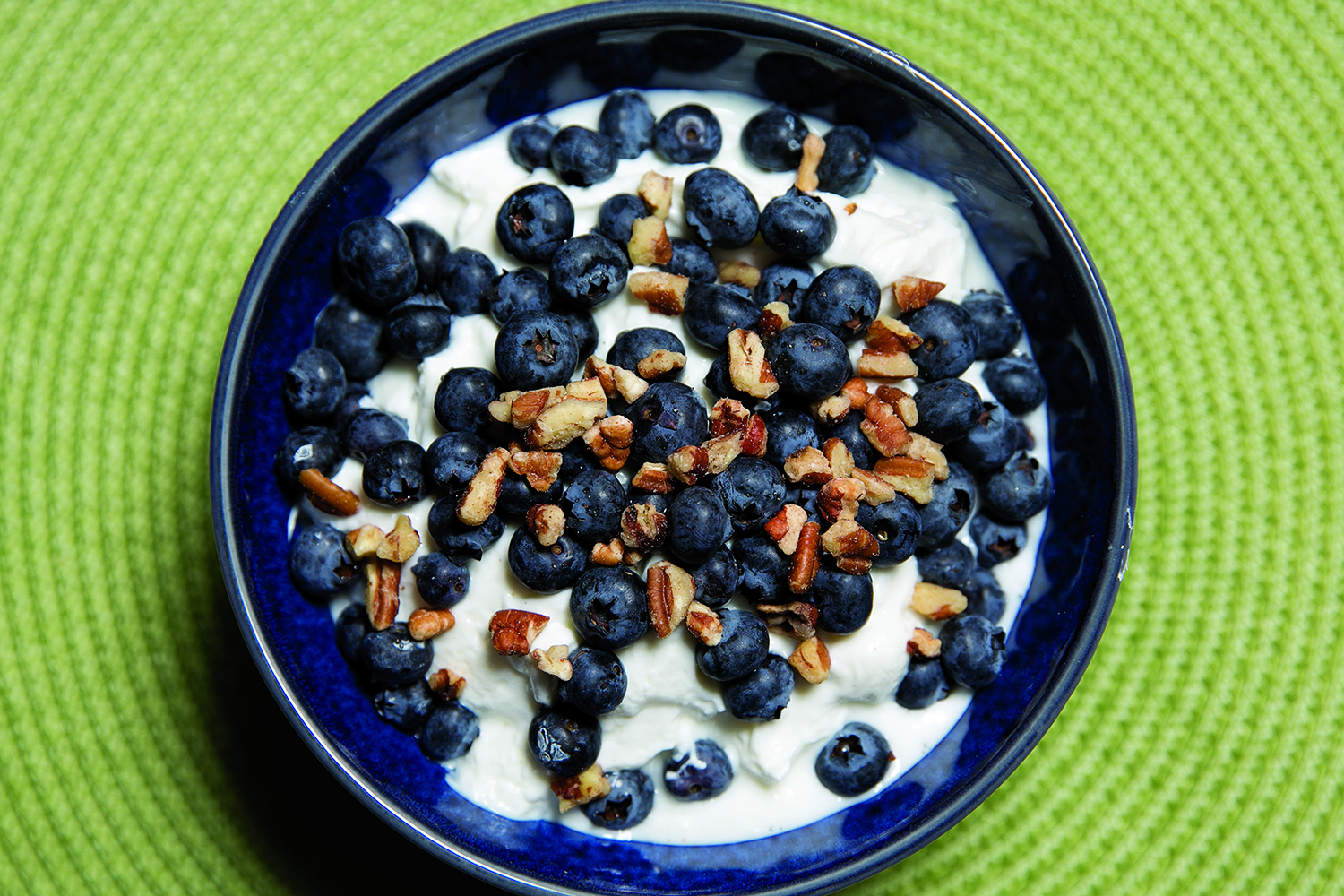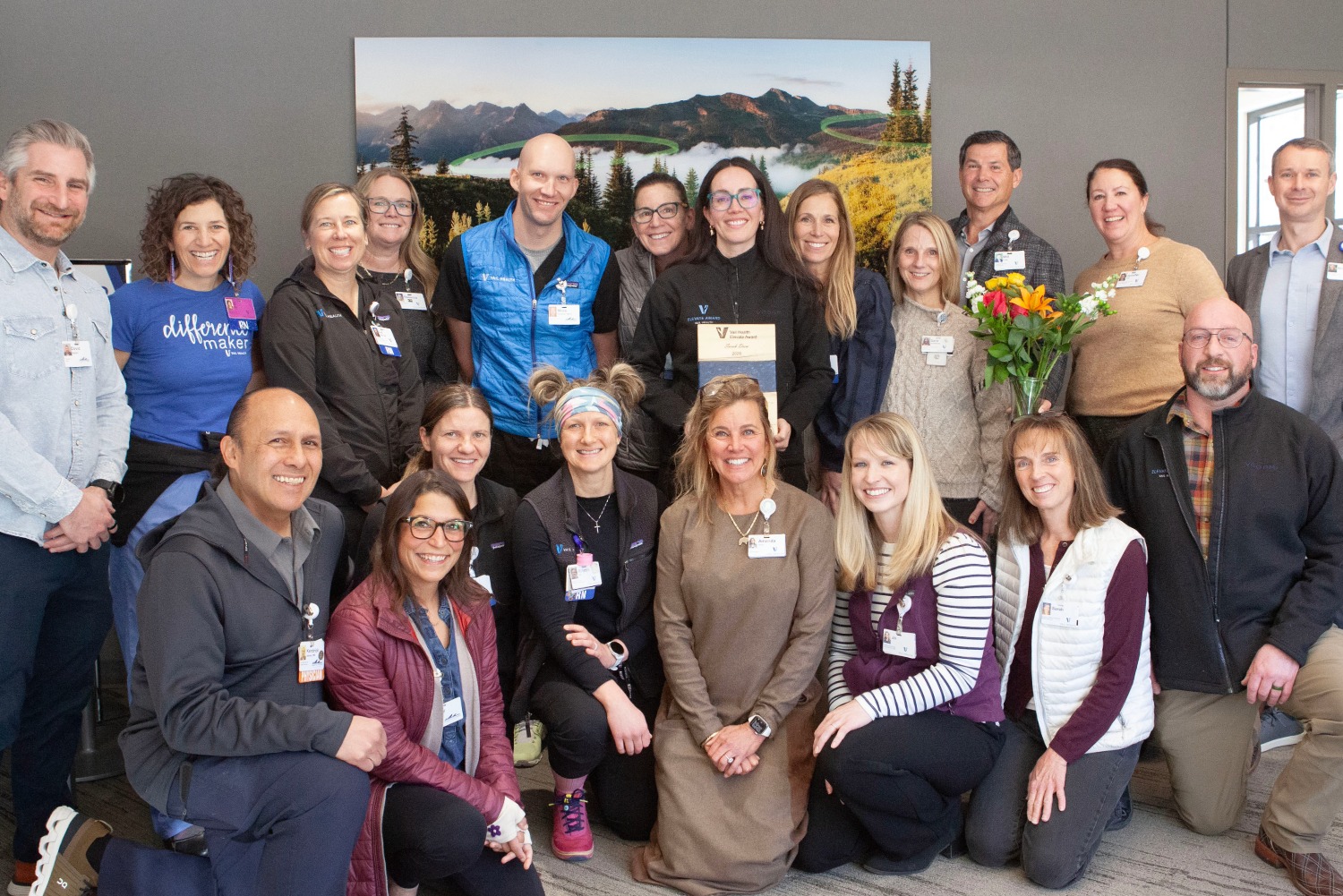News
Eat Like A Dietitian

Nutrition experts aren’t perfect when it comes to eating, but they do usually implement the main pillars of a balanced diet: nutrition, variety and moderation.
Unfortunately, there is not a cookie-cutter methodology that works for everyone. Every person has individual relationships with food —preferences, allergies or intolerances, a unique family and medical history, a specific budget and schedule for eating, individual cooking skills and a different level of access to quality food sources.
“Those are things I feel really play into how people eat and what dietitians consider to help people meet their nutritional needs,” says Rhonda Galer, clinical nutrition manager for Vail Health.
In general, however, even though every person’s nutrition plan is unique, the core principles of a healthy diet are pretty consistent.
"Studies have shown that most Americans still don’t get enough fruits and vegetables and whole grains,” explains Katie Mazzia, clinical dietitian and diabetes educator for Vail Health. “So, no matter what you eat, aim to balance out your day with mostly healthy choices.” Mazzia and Galer don’t really talk “diets” anyway, but what they like to refer to as “dietary patterns.”
“Everybody’s dietary pattern is comprised of what they do on a regular basis,” Mazzia says, “versus ‘being on a diet.’”
What They Eat
Galer starts most mornings with a low-sugar, high-fiber cereal with skim milk and topped with berries, but three times a week she has a higher-protein breakfast of eggs or turkey sausage and an English muffin. She drinks coffee in the morning, and then just water throughout the day.
For lunch, she loads up on vegetables at the hospital’s salad bar. On top of a plate of veggies, she adds some protein like a chicken breast or some feta or provolone cheese, and on the side, she has some low-sodium chips or crackers. As an afternoon snack, Galer has a yogurt to get her dairy in, or a small Cutie orange in the winter since it’s cold and flu season.
Dinner is usually a homemade soup or a balanced meal of fish, chicken or occasionally beef,with a potato, pasta or rice, and
a vegetable. “Overall, I try to limit empty calories like sweets and alcohol to the weekend,” she explains. “And I try to eat heart healthy — low fat and low sodium.”
Mazzia says she eats a little different from day-to-day, based on timing. Generally, she might get up in the morning and grab half a small nutrition bar and some water before a trail run, followed by coffee and a handful of nuts while running out the door.
“I try to think of having three food groups at each meal,” she says, “so I come to work and have a big bowl of berries and oatmeal or cereal, then some protein like a hard-boiled egg. And water, of course.”
For lunch, Mazzia says she also hits up the salad bar and gets in about five servings of vegetables, as well as a lean protein like beans, tuna, edamame, chicken or salmon.
Her afternoon snack is usually a sweet, she says, like a small cookie or a piece of chocolate.
“The American Heart Association recommends no more than 25 grams of added sugar per day,” she says. “So I try to be mindful of that.”
Dinners for Mazzia are a lot of one-pot meals, she says, with a whole grain or pasta on the bottom, then vegetables and some kind of lean protein, usually a small portion of red meat three times a week.
“I like a lot of flavor and texture, so my trick is to add a little dried fruit, some nuts or seeds on top, or maybe just a small amount of really flavorful cheese like parmesan or goat cheese,” she says. “Sesame oil, hot sauce and fresh herbs are nice additions as well.”
For alcohol, Mazzia says you can follow the general recommendation of one serving for women and two for men (1 serving = 12oz. beer, 1-1/2 oz. distilled spirits or 5 oz. wine).
Plan For Success
“I think what works for me is planning,” says Mazzia. “If you don’t have the food available, it’s going to be hard to make a healthy meal.”
Align your shopping list with your meal planning. If you’re really busy during the week, Mazzia suggests getting your meal plan together to set you
rself up according to your budget and schedule. Factor in leftovers too; sometimes it's easier to prepare more food than needed so you can eat it later on.
Galer says to be flexible with the plan, so that when things come up during the week and you have to make a change, it’s ok, or if there’s an evening when you just don’t feel like cooking you can have a backup in place — maybe something you can easily pull out of the freezer and heat up, like those leftovers you saved for just such an occasion.
“I always encourage my clients to make a plan so they aren’t stuck having a hot dog or going out for a meat lover's pizza when they are too busy,” she says.
Have helpful tools in your house, too, like a crockpot, suggests Mazzia. For those who don’t like to cook, keep it simple and convenient.Healthy options are out there. Just make sure that anything in a package, box or bag is made of up whole food ingredients.
“I think that’s a huge plus these days,” says Mazzia. “There are a lot of healthy options available. You just have to think about it, be creative and take the time to read labels in the grocery store.”
As far as snack options, both Galer and Mazzia agree that it’s relative to what your needs are. For instance, if you are watching your weight and you’re hungry but you’ve eaten a good lunch and you’re going to eat a good dinner, have veggies because you really don’t need to eat much. But have something more substantial, possibly with protein, if you’re hungry and it’s going to be several hours before you eat, or if you had a light breakfast and are out skiing and ready for more food.
For nutrition bars, look for options that have natural ingredients, are 150 to 200 calories and on the lower end of the sugar scale. After a three-hour run, you may need one of the hearty bars like the Clif protein bars, but generally options with minimal ingredients, like LÄRABAR®, are good for a snack.
And never let yourself get to a starving state that will lead you to pig out later. Plan ahead and always have healthy options available.
“Control your environment, because a lot of people come home hungry,” says Mazzia. “If I had ice cream in my freezer, I would eat it every night. So, sometimes people have to control their environment if they can’t control themselves.”
______________________________________________________
For more information on nutrition and dietitian services, visit vailhealth.org/nutrition
To schedule an appointment call (970) 479-5058.
More News
-
New!
More

Sarah Drew Honored as Recipient of Vail Health Elevate Award
Sarah Drew, MSN, FNP-C, ENP-C, Senior Director of Emergency and Trauma Services at Vail Health, has been named the recipient of the Vail Health Elevate Award.
-
New!
More

First Baby of 2026
It's a boy! Vail Health Hospital welcomed the first baby born in 2026 on January 5 at 7:48 p.m.
-
More

Screening Secrets: What Every Man Should Know About Prostate Cancer Screening
Prostate cancer is the most common type of non-skin related cancer in men, and it is the second leading cause of cancer-related deaths in men within the United States, behind lung cancer. Fortunately, if caught early, prostate cancer remains highly treatable and curable with minimally invasive procedures.





